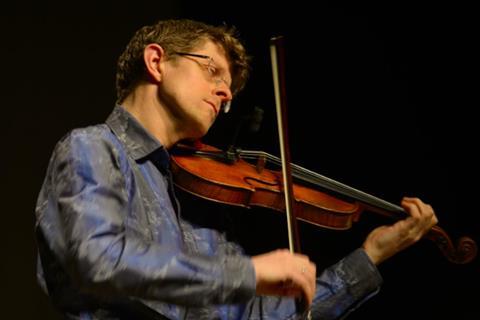The genre-bending Dutch violinist Tim Kliphuis shares his top 7 tips

1. Make the decision not to be perfect
This is the BIG one. As classical musicians we’ve been taught to constantly think in terms of ‘right’ or ‘wrong’ while we are playing, correcting the minutest of mistakes. Jazz, on the other hand, cannot be learnt using this kind of negative judgement. It’s about trying things out without fear of failure. To get into this creative ‘zone’, you must decide to leave your perfection issues outside the door.
2. Practise in fourths
We’ve all practised scales in broken thirds and sixths. But most of us never play broken fourths on a scale. And yet, the fourth is the most important interval in improvisation. Make sure your fingers can find it!
3. The leading note
To start yourself on the journey of improvisation, it helps to take one step at a time. A big one in jazz is to be able to find the leading note in any key. It’s that seventh note in the scale that we tend to avoid. Practise this with two players, one holding the root note and the other improvising around the leading note:
4. Respect the melody
Bucky Pizzarelli, one of the great American guitarists, taught me a very important lesson. People love the melody! Improvisation is fun, but be aware of the original melodic line at all times. Learn the melody two ways: read the jazz chart of the song, and listen to a recording of the song by singer Ella Fitzgerald. She stays very true to the original.
Read: 5 ways in which learning new violin styles can train your musical ear
Read: Lloyd Swanton on the art of free improvisation
Read: 5 tips from Max Grosch for improving jazz rhythm
5. Learn the cadence
There are two fundamental chord families in music: Tonic (‘at home’) and Dominant (‘away’). Jazz is no different, it uses these two types of chords constantly. You can feel this movement by adding a minor seventh note to any major chord (on G major, that is the note f), then resolving the tension by moving to its resolution. For instance, G7 moves to C major and C7 moves to F. If you do this 12 times, you’ll be back where you started:
6. The metronome is your friend
Jazz is rhythm music. Once the beat starts, it keeps going. Instead of using the metronome like a doctor, to fix problematic rhythms, use it as your friend. Start the metronome and let it dictate the beat. Play on it, improvising rhythmically with very simple motifs in one key. You will find yourself joining up with the beat more and more, developing your inner pulse as you go along.
7. Play, play, play
Unlike classical music, jazz develops mostly while playing. That is why there are jam sessions. As soon as you know your first tune (the melody, and maybe a short solo) go out there and try it out in a jam. Don’t wait until you’re ready. That time never comes! Remember the first tip: creativity only comes without thinking of good and bad all the time.
For more from Kliphuis on this topic, see his tuition book Improvisation for Strings.
Tim Kliphuis’s Academy of Improvising Strings will take place from 30 October next year. Read an interview with course member Simone Vierstra in String Courses 2021, free with The Strad’s January issue. On sale 16 December
And see below for a performance clip from the violinist that shows the fun in playing with classical orchestra musicians.
Topics
Technique: Jazz soloing on the double bass
- 1
- 2
- 3
- 4
- 5
 Currently reading
Currently reading‘I’m a classically-trained violinist, but I’d love to play Jazz. How do I start?’
- 6
- 7
- 8
- 9
- 10
- 11
- 12
- 13





















































1 Readers' comment